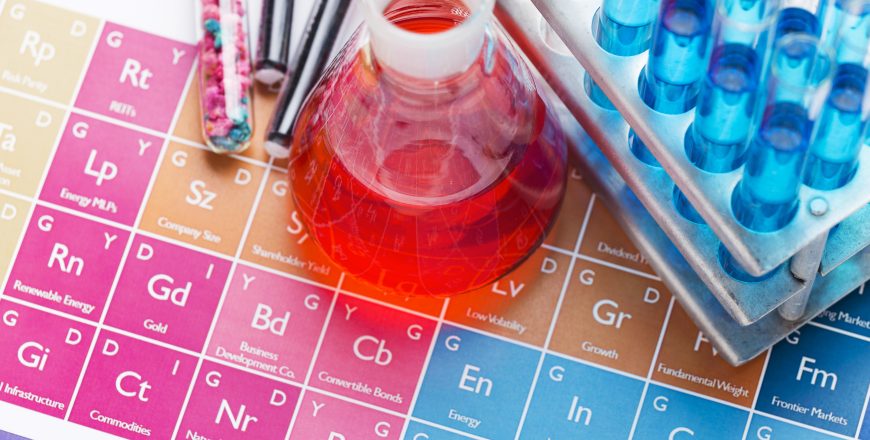CHEMISTRY GRADE 12

COURSE DESCRIPTION:
- Solid State
- Solutions
- Electrochemistry
- Chemical Kinetics
- Surface Chemistry
- General Principles and Processes of Isolation of Elements
- The p-Block Elements
- the d- and f- Block Elements
- Coordination Compounds
- Haloalkanes and Haloarenes
- Alcohols, Phenols, and Ethers
- Biomolecules
- Aldehydes, Ketones & Carboxylic Acids
- Chemistry in Everyday Life
- Polymers
- Amines
Solid State - Part 1
1
Introduction
2
Classification of Solids
4
Types of Crystalline Solids – Part 2
6
Types of Unit Cells
7
Crystal Systems
8
Number of Atoms in Unit Cells – Part 1
9
Number of Atoms in Unit Cells – Part 2
10
Closed Packed Structures
11
3 Dimensional Closed Packing
12
Formula of a Compound and Number of Voids Filled
13
Example 1.2
14
Locating Tetrahedral Void
15
Packing Efficiency in HCP and CCP
16
Packing Efficiency in Body Centered Cubic Structures
17
Packing Efficiency in Simple Cubc Lattice; Calculations
Solutions
1
Introduction
2
Expressing Concentration of Solutions – Part 1
3
Expressing Concentration of Solutions – Part 2
4
Examples; Solubility – Part 1
5
Solubility – Part 2
6
In Text Questions 2.5, 2.6 and 2.7
7
Vapour Pressure of Solutions
8
Text Book Questions
9
Vapour Pressure of Solutions of Solids in Liquids; Ideal Solutions
10
Non Ideal Solutions; Azetrophs
11
Colligative Properties and Determination of Molar Mass
12
Elevation of Boiling Point
13
Depression of Freezing Point
14
Osmosis, Reverse Osmosis, Abnormal Molar Mass
15
Van’t Hoff Factor and Solved Problems
Electrochemistry
1
Introduction
2
Voltaic Cell
3
Measurement of Electrode Potential
4
Equilibrium Constant from Nernst Equation
5
Conductance of Electrolytic Solutions
6
Law of Independent Migration of Ions ; Electrolysis
7
Products of Electrolysis
Chemical Kinetics - Part 1
1
Rate of Chemical Reactions
2
Average and Instantaneous Rate
3
Reactions – Different Stoichiometry Coefficients
4
Rate Law Expressions – Part 1
5
Rate Law Expressions – Part 2
6
Unimolecular and Complex Reactions
7
Molecularity of a Reaction
8
Integrated Rate Equations – Part 1
Chemical Kinetics - Part 2
1
Integrated Rate Equations – Part 2
2
Integrated Rate Equations – Part 3
3
Problem Solving – 1
4
Effect of Temperature on the Rate of a Reaction – Part 1
5
Effect of Temperature on the Rate of a Reaction – Part 1
6
Effect of Temperature on the Rate of a Reaction – Part 2
7
Arrhenius Equation
8
Collision Theory – Part 2
Surface Chemistry
1
Introduction
2
Distinction Between Adsorption and Absorption
3
Types of Adsorption
4
Adsorption Isotherms
5
Applications of Adsorption and Catalysts
6
Mechanism of Enzyme catalysis, Catalysis in Industry
7
Adsorption theory of Heterogeneous catalysis; Features of Solid catalyst – Part 1
8
Features of Solid catalyst – Part 2;Shape Selective Catalysis, Enzyme catalysis
9
Colloids; Types of Colloids; Classification of Colloids – Part 1
10
Classification of Colloids – Part 2
11
Preparation of Colloids & Purification of Colloids
12
Properties of Colloids – Part 1
13
Properties of Colloids – Part 2
14
Emulsions; Colloids around us; Application
Solid State - Part 2
1
Imperfections in Solids – Part 1
2
Imperfections in Solids – Part 2
3
Electrical Properties
4
Conduction of Electricity in Semiconductors
5
Applications of n-Type and p-Type Conductors
6
Classification of Solids
General Principles and Processes of Isolation of Elements
1
Occurrence of Metals; Concentration of Ores
2
Extraction of Crude metal from Concentrated ore; Thermodynamic Principles of Metallurgy
3
Extraction of Iron from its Oxides & Copper from its Oxides
4
Extraction of Zinc
5
Refining – Part 1
6
Refining – Part 2
The p-Block Elements
1
Introduction; Group 15 Elements
2
Ionisation Enthalpy;Electronegativity;Physical & Chemical Properties – Group 15
3
Ammonia; Oxides of Nitrogen, Phosphorus
4
Chemical Properties of Group 15 Elements
5
p-Block – Group 16 Elements; Dioxygen
6
Simple Oxides; Ozone
7
Sulphur – Part 1
8
Sulphur – Part 2
9
Group 17 Elements
10
Chlorine
11
Oxoacids of Halogen; Interhalogen Compounds
12
Group 18 Elements
The d- and f- Block Elements
1
The d- and f- Block Elements
2
Atomization Enthalpy
3
Oxidation States
4
Magnetic Properties; Formation of Coloured Ions; Interstitial Compounds; Alloys and Complex Compounds
5
Standard Electrode Potential,Trends
6
Trends and Stability of Higher Oxidation States; Compounds of d- Block Elements – Part 1
7
Compounds of d- block Elements – Part 2
8
The Lanthanides – Part 1
9
The Lanthanides – Part 2
10
The Actinides – Part 1
11
The Actinides – Part 2
Coordination Compounds
1
Introduction
2
Coordination Polyhedron; Oxidation Number ;Werner’s Theory
3
Werner’s Theory of Coordination Compounds
4
Nomenclature of Coordination Compounds
5
Writing Formulas of IUPAC Names; Valence Bond Theory – Part 1
6
Isomerism in Coordination Compounds
7
Limitations of Valence Bond Theory; Crystal Field Theory (CFT) (Octahedral Complexes)
8
Crystal Field Theory ( Tetrahedral Complexes); Colour in Coordination Complexes; Bonding in Metal Carbonyls
9
Stability of the Coordination Compounds & Applications
Haloalkanes and Haloarenes
1
Introduction
2
Nomenclature – Part 1; Nature of C-X Bond; Methods of Preparation – Part 1
3
Methods of Preparation – Part 2; Physical Properties
4
Chemical Reactions – Part 1
5
Chemical Reactions – Part 2
6
Stereochemical Aspects of Nucleophilic Substitution Reaction
7
Nomenclature – Part 2
8
Halogen Exchange; Reaction of Haloarenes; Polyhalogen Compounds
Alcohols Phenols and Ethers
1
Nomenclature; Alcohols
2
Nomenclature; Phenols and Ethers; Structure of Functional Groups
3
Preparation of Alcohols & Phenols
4
Physical Properties of Alcohols, Phenols; Chemical Reactions
5
Electrophilic Aromatic Substitution & Important Reactions of Phenols
6
Some Commercially Important Alcohols
7
Cleavage of – OH Bond
8
Esterification & Its Applications
9
Preparation of Ethers
10
Chemical Reaction of Ethers
11
Friedel Crafts Alkylation Reaction & Acylation Reaction; Williamson Ether Synthesis
12
Acid Dissociation; Acidity of Alcohols; Cleavage of C-O Bond in Ethers
13
Williamson Synthesis of Ethers
Biomolecules
1
Introduction
2
Classification of Carbohydrates; Preparation & Structure of Glucose – Part 1
3
Preparation & Structure of Glucose – Part 2
4
Cyclic Structure of Glucose; Structure of Fructose; Disaccharides; Sucrose
5
Disaccharides – Maltose, Lactose; Polysaccharides – Starch, Glycogen
6
Polysaccharides – Cellulose; Importance of Carbohydrate; Proteins
7
Types of Proteins; Structure of Proteins; Denaturation of Proteins; Enzymes
8
Vitamins; Nucleic Acids – Part 1
9
Nucleic Acids – Part 2; Double Strand Helix of DNA
10
Classification of Amino Acids; Zwitter Ion; Structure of Proteins; Structure of Fructose
Aldehydes Ketones & Carboxylic Acids
1
Physical Properties & Chemical Properties of Carboxylic Acids – Part 1
2
Chemical Properties of Carboxylic Acids – Part 2
3
Carbonyl Group & Its Structure; Oxidation of Alcohol
4
Methods of Preparation of Aldehydes & Ketones
5
Mechanism of Nucleophilic Attack on the Carbonyl Group
6
Chemical Reactions Involving Nucleophilic Attack; Reduction Reaction
7
Wolff- Kishner Reduction Oxidation Reaction; Haloform Reaction
8
Electrophilic Substitution Reaction; Physical Properties of Aldehydes & Ketones; Hydration of Alkynes
9
Reduction of Nitriles & Esters; Preparation of Ketones; Chemical Properties of Carboxylic Acids
10
Resonance & Stability of Carboxylate Ion; Acidic Property & Dissociation Constant of Carboxylic Acid
11
pKa Values & Effect of Substituent Group on Carboxylic Acids
12
Preparation of Carboxylic Acids
13
Reaction of Alpha – Hydrogen in Aldehydes & Ketones; Aldol Condensation; Cross Condensation – Part 1
14
Cross Condensation – Part 2; Cannizzaro Reaction; Uses of Aldehydes & Ketones
15
Nomenclature of Aldehyde, Ketones & Carboxylic Acids
Chemistry in Everyday Life
1
Introduction
2
Receptors as Drug Targets; Therapeutic Action of Different Classes of Drugs – Part 1
3
Therapeutic Action of Different Classes of Drugs – Part 2
4
Cleansing Agents: Soaps, Synthetic Detergents
Polymers
1
Introduction
2
Preparation of Addition Polymers; Condensation Polymerization
3
Rubber – Types of Rubber; Biodegradable Polymers; Addition Polymers
Amines
1
Introduction
2
Preparation of Amines – Part 1
3
Preparation of Amines – Part 2
4
Classification of Amines
5
Physical Properties of Amines
6
Boiling Point; Nomenclature of Amines
7
Chemical Reactions; Structure – Basicity Relationship of Amines
8
Acylation Reactions – Part 1
9
Acylation Reactions – Part 2; Carbylamines Test
10
Reaction of Aliphatic & Aromatic Amines with Nitrous Acid
11
Bromination Reactions of Aromatic Amines
12
Diazonium Salts – Preparation & Properties; Displacement Reactions
13
Replacement of H group & Coupling Reaction of Diazonium Salts; Displacement Reactions – Part 1
14
Displacement Reactions – Part 2
15
Reaction of Amines with Salts with Aryl Sulphonyl Chloride
16
Nitration
17
Sandmeyer Reaction
Be the first to add a review.
Please, login to leave a review






